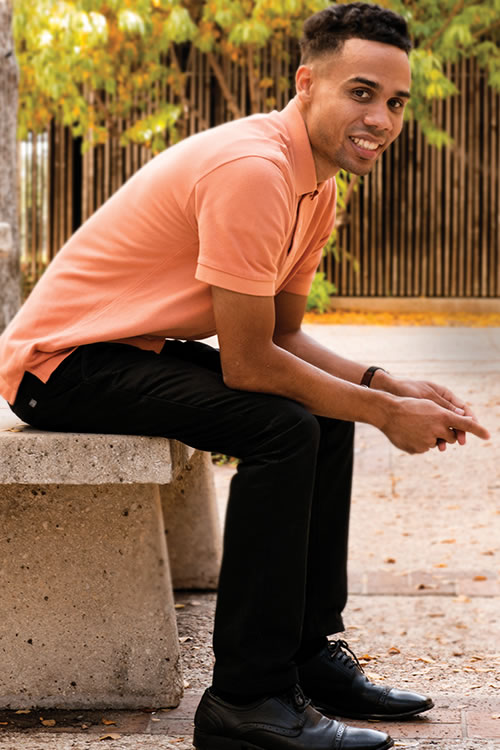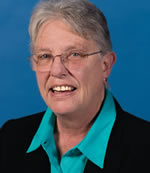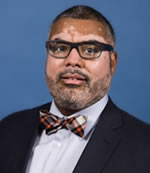
By Michelle Mondo
Anthony Thornton M.S.W. ÔÇÖ15 was only 5 years old when a caseworker from Texas Child Protective Services found him walking alone in a neighborhood park. ÔÇťWe did thatÔÇöwander the streets when my mom wasnÔÇÖt around,ÔÇŁ he explains. She hadnÔÇÖt been around for about two weeks, though, having left Thornton and his four siblings in the care of a teenager they didnÔÇÖt know; she stuck around for only a few days. When the caseworker approached Thornton, he was suspicious. ÔÇťEven at that age I was pretty street-smart and knew not to talk to strangers,ÔÇŁ he says, ÔÇťso it took her some time to get me into her car.ÔÇŁ
That day marked ThorntonÔÇÖs entrance into the foster care system with the Texas Department of Family and Protective Services, a beleaguered agency under attack for taking children from homes filled with abuse and neglect but thrusting them into an equally badÔÇöor worseÔÇöenvironment. In the midst of a push for reform, UTSA professors and studentsÔÇösome of whom were in foster care themselvesÔÇöfrom across disciplines have been looking at ways to help fix a system thatÔÇÖs been labeled broken.
ÔÇťWhile it is important to ensure that children and young people are not neglected or abused by adults in their family, if we take them away from the only family they know, we have to be really sure we are doing the most we can to give them what a loving family would provide,ÔÇŁ says UTSA sociology professor Harriett Romo, who is also director of the universityÔÇÖs Child and Adolescent Policy Research Institute.
Romo became interested in the foster system about six years ago after a student who worked in her office revealed that he had been a foster youth. Since then, Romo, along with CAPRI staff and students, has overseen or participated in major grant projects for the federal government and formed partnerships with state and local agencies that focus on the transition of children out of the system and into adulthood, including preparing them for college.
In March, Romo, CAPRI assistant director Sophia Ortiz, and graduate students at CAPRI will be presenting a paper at the Southwestern Social Science Association meeting that identifies gaps in services provided to youth with experience with Child Protective Services and who are transitioning into adulthood.
The research being done by faculty, staff, and students in the College of Liberal and Fine Arts and the College of Public Policy has created a robust body of work that examines problem areasÔÇöfrom finding stable housing to forming lasting bonds with adults. The COPP faculty also help train and educate Child Protective Services caseworkers who are working toward a degree in social work.
UTSAÔÇÖs work has become even more critical since a federal judge ruled in December 2015 that the entire Texas system is unconstitutional and violates the rights of the children placed under its care. ÔÇťTexasÔÇÖ foster care system is broken, and it has been that way for decades,ÔÇŁ U.S. District Judge Janis Graham Jack wrote in her ruling. ÔÇťIt is broken for all stakeholders, including DFPS employees who are tasked with impossible workloads. Most importantly, though, it is broken for Texas children [in permanent managing conservatorships], who almost uniformly leave state custody more damaged than when they entered.ÔÇŁ
Child Protective Services had already embarked on a foster system redesign when the judge ordered a special master to help with reform. Other states are facing the same dilemma because of lawsuits filed by a child advocacy agency that sued on behalf of a group of Texas children. The Texas attorney general has appealed the ruling.
Former and current foster youth who have been forthcoming with their storiesÔÇöincluding UTSA students who have spoken to state lawmakersÔÇöhave been sounding the alarm for years. And those who have defied the odds show that the situationÔÇöwhile in desperate need of attentionÔÇöis not hopeless.
Now engaged with two children, Thornton graduated in December with his masterÔÇÖs in social work. His journey highlights the challenges faced by thousands of abused and neglected children who enter foster care each year but do not find the support they need.
This situation has to change, the experts say. After all, helping youth to thrive is the responsibility of the entire community, Romo points out. ÔÇťChildren and teens need the care and commitment of many positive adults in their lives, especially if their biological parents cannot care for them,ÔÇŁ she says. ÔÇťOur lack of commitment and responsibility to these children is a problemÔÇöand it is everyoneÔÇÖs problem.ÔÇŁ
Eventually, ThorntonÔÇÖs mom regained custody of her children, and the family moved from Amarillo to El Paso. But once again, Thornton arrived home one day to find police and CPS caseworkers taking his siblings into custody. ÔÇťI walked over to my mom and told her, ÔÇśYou promised this would never happen again,ÔÇÖÔÇŁ he says. ÔÇťAnd then I walked out without shedding a tear.ÔÇŁ He was 10 years old.
More than 31,000 children were in foster care statewide in fiscal year 2014, according to a DFPS report. Region 8, which includes San Antonio, had the second highest number at more than 4,800; itÔÇÖs second only to the region that includes Houston. Depending on the circumstances, children can be placed in a variety of settings, including foster homes, emergency shelters, state schools and hospitals, group homes, and juvenile detention centers. Overall in Texas, 151 children died from confirmed abuse or neglect in fiscal year 2014, according to the DFPS. Of those cases, seven were in foster care, the DFPS reported, adding that injuries could have occurred prior to placement. According to experts, finding a way to balance protection and safety with making sure children have as stable a life as possible is not easy but is necessary
UTSA social work professor Jolyn Mikow has a unique perspective on the DFPS, given her experience as a former CPS caseworker. She left the agency to pursue her degree and now directs the universityÔÇÖs Title IV Social Work Education Program, which funds education for caseworkers seeking a social work degree. As part of that program, Mikow and Alfred P├ęrez, also a social work professor, travel to Corpus Christi to teach classes, since no nearby college or university has a social work program. TheyÔÇÖve graduated 17 students, according to Mikow, and are working on a second group now.
Education is needed because years ago the DFPS ÔÇťdeprofessionalized the supervisionÔÇŁ of CPS caseworkers and stopped requiring degrees in social work, Mikow says. ÔÇťFrom my perspective, having been an employee, the public throws around the term ÔÇśsocial worker for CPS,ÔÇÖ but the vast majority of caseworkers arenÔÇÖt social workers. IÔÇÖve worked with people with degrees in physical education or Spanish, for example. You have people working the jobs without any education about working with families.ÔÇŁ
Then there are also challenges once caseworkers become trained in the field, Mikow explains. While the agency tries to be supportive of families, it can also be ÔÇťvery punitiveÔÇŁ because they donÔÇÖt want to get in trouble if a child dies or suffers abuse or neglect. ÔÇťSocial work is support- and strength-focused, working on solutions to the problem,ÔÇŁ she continues, ÔÇťand the solution is to not always blow up the family.ÔÇŁ
Mikow says the DFPS is already trying to find a balance in its policies, and after going through two reviews of its processes, it has worked with academics and others to find a curriculum for mentors of child welfare caseworkers. The head of the agency has also put more focus and money into prevention. But there are some things that only the state legislature can fix, and funding remains an obstacle. ÔÇť[State legislators] can say they are values-driven and family-focused,ÔÇŁ Mikow explanis, ÔÇťbut they usually donÔÇÖt put their money where their mouth is. ItÔÇÖs not politically expedient to spend more money, but they have to.ÔÇŁ
Before he was set to graduate from high school, Thornton had no place to live. He had been adopted as a teen, along with two of his four siblings, but says the living situation with his adoptive parents was ÔÇťjust not viable.ÔÇŁ His other two siblings were also adopted, but they rarely saw each other, which is a common problem among children in care who are separated from their brothers and sisters. Without those family connections, Thorn┬şton stayed on the couches of friends who had sympathetic parents, but he knew it wasnÔÇÖt a long-term solution.
This situation isnÔÇÖt atypical. Especially for youth who are transitioning out of the system, Romo says, finding stable housing can be a huge obstacle. Landing at friendsÔÇÖ homes is actually considered lucky by foster youth standards. In a study published in the Journal of Adolescence, Romo and Beatrix Perez examined couch surfing among Latino young adults who had been in foster care and found that peer networks and informal systems were crucial for foster youth.
Romo continued studying housing issues for a federal Housing and Urban Development grant project. CAPRI examined housing stability as foster youth aged out of care. Most recently, along with local nonprofit Baptist Child and Family Services, CAPRI researchers helped create a model for early intervention to help foster youth transition to adulthood. Overall, Romo says, their research found that former and current foster youth need positive permanent connections, social and emotional support, education and career opportunities, and safe and secure housing.
Along with the research, CAPRI also hosts the ACCESS Center computer lab and resource room, which assists youth who are transitioning out of foster care to enroll in college. The facility provides a website for all foster youth to submit updated information on college applications, course registration, financial aid, and housing.
Since 2003, foster youth who meet certain requirements are eligible for tuition waivers at Texas public universities. About half of U.S. states provide some form of financial assistance to foster youth for higher education. A few years ago the Texas legislature increased the age of eligibility from 21 to 25. That change enabled Thornton, who had moved to Arizona, where he received his bachelorÔÇÖs degree, to apply to UTSAÔÇÖs social work program.
Alfred P├ęrez knows ThorntonÔÇÖs path. He too was raised in the foster care system and throughout his academic career has helped shape national foster care system policy. HeÔÇÖs now examining those same policies. Hired at UTSA in 2014, P├ęrez had several choices for professorships awaiting him but chose the university because itÔÇÖs a Hispanic-serving institution and on track to become Tier One. ÔÇťUTSAÔÇÖs social work department is young and has a transcultural mission to train social workers, which aligns with my values. And just as important, the CAPRI center was doing some really groundbreaking research in the area of foster care, and I felt my own body of work had a home here.ÔÇŁ
Research by P├ęrez and social work colleague Richard Harris has examined the effects of the national services provided under the Chafee Foster Care Independence Program, which offers assistance to help foster youth transition out of the system and into adulthood. According to P├ęrez, only a third of all foster care youth received the services promised, despite an investment of $140 million per year since 1999.
Thornton studied under P├ęrez and worked on a variety of research topics, including permanence, a word used to describe successfully leaving the foster care system. Traditionally, that has been defined as adoption, a definition P├ęrez now believes is too narrow. ÔÇťIn the child welfare system we use language like ÔÇśforever homesÔÇÖ and believe once these kids are placed in homes or guardianships they live ÔÇśhappily ever after,ÔÇÖÔÇŁ P├ęrez says. ÔÇťBut my research supports previous research showing adopted youth from foster care may fare worse than youth who remain in foster care. This raises questions about the well-being of youth whoÔÇÖve exited foster care through permanence, given the federal and state policy priorities to move children into permanence.ÔÇŁ
P├ęrez will be delving into the topic even more as coÔÇôprincipal investigator in a groundbreaking, longitudinal, five-year study called the Texas Youth Permanency Study. The research is sponsored by Upbring, P├ęrez says, and heÔÇÖll be working with colleagues Monica Faulkner and Tina Atkins from The University of Texas at AustinÔÇÖs Child and Family Research Institute. The study examines the postpermanency experiences and long-term developmental outcomes of older youth in TexasÔÇÖ foster care system.
He has also been appointed to the Texas Supreme Court ChildrenÔÇÖs Commission, where he serves on the Higher Education Implementation Committee, which is working to transform educational outcomes for children and youth in foster care.
To Thornton, who didnÔÇÖt find his own permanent family after being adopted, family isnÔÇÖt about bloodlines or legal guardianship. He says itÔÇÖs those people who have supported him and stood by him when family could not or would notÔÇölike his lifelong friend who would become his fiancee. He says, they are people like P├ęrez, who was not only his professor but also a role model and mentor.
The day after commencement ceremonies in December, Thornton and his fiancee packed up the last of their things and drove back to Arizona, ready to start the next chapter.
ÔÇťI was determined not to let my past narrative shape my future,ÔÇŁ Thornton says. ÔÇťMy time and experience at UTSA has brought much success beyond academic achievement. I was able to reconnect with supportive members of my birth family, forge lifelong connections with classmates at UTSA, and connect with an inspirational UTSA faculty mentor. Graduating was an especially joyous milestone. My degree and time at UTSA represents a positive future for my family.ÔÇŁ
Some of the key players in the universityÔÇÖs work on the foster care system

Harriett Romo
Professor, Department of Sociology, College of Liberal and Fine Arts
Director, Child and Adolescent Policy Research Institute
ÔÇťWhile it is important to ensure that children and young people are not neglected or abused by adults in their family, if we take them away from the only family they know, we have to be really sure we are doing the most we can to give them what a loving family would provide.ÔÇŁ

Jolyn Mikow
Senior Lecturer, Department of Social Work, College of Public Policy
ÔÇť[State legislators] can say they are values-driven and family-focused, but they usually donÔÇÖt put their money where their mouth is. ItÔÇÖs not politically expedient to spend more money, but they have to.ÔÇŁ

Alfred P├ęrez
Assistant Professor, Department of Social Work, College of Public Policy
ÔÇťIn the child welfare system we use language like ÔÇśforever homesÔÇÖ and believe once these kids are placed in homes or guardianships they live ÔÇśhappily ever after.ÔÇÖ But my research [shows] adopted youth from foster care may fare worse than youth who remain in foster care.ÔÇŁ
